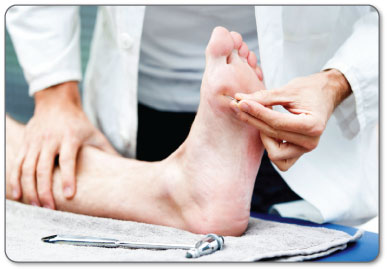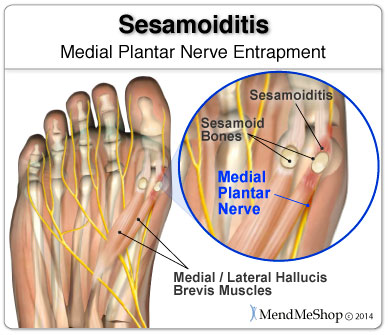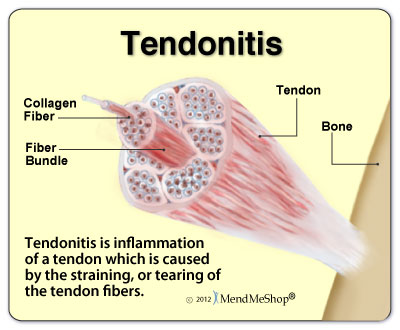Cold Compression Therapy slows nerve and cell function - reducing the swelling that blocks blood vessels from doing their job. This is important because once blood vessels are blocked or damaged, they can no longer carry oxygenated blood through the tissue and tissue cells begin to break-down. Without cold compression therapy cellular break-down and tissue damage continues as the cells don't get the oxygen they need to survive. By limiting the amount of damage done to your tendon, you also limit the amount of healing that needs to occur. This is a very important step to heal tendon injuries faster and with less pain! This is why you need to treat your sesamoiditis foot pain right after it's hurt, when you notice pain / swelling / inflammation, or directly after a re-injury. Applying cold compression right away will stop the damage immediately and unblock your blood vessels to let your body's natural blood flow in to start healing the tissue.
24 to 72 hours after your initial injury or when you first notice pain and swelling in the ball of your foot to stop cellular damage, relieve pain, and decrease swelling.
- After exercise, workouts or activity of any kind to prevent re-injury of your sesamoids.
- Before and after surgery during rehabilitation to control pre and post-surgery pain and swelling.
- Anytime you feel your sesamoiditis has made your foot tender, painful or you're having a flare-up of an old sesamoiditis injury.
- Anytime you have swelling, sharp throbbing pain or inflammation in the ball of your foot.
- Any other situation where you need to draw the pain and inflammation out of your foot.






